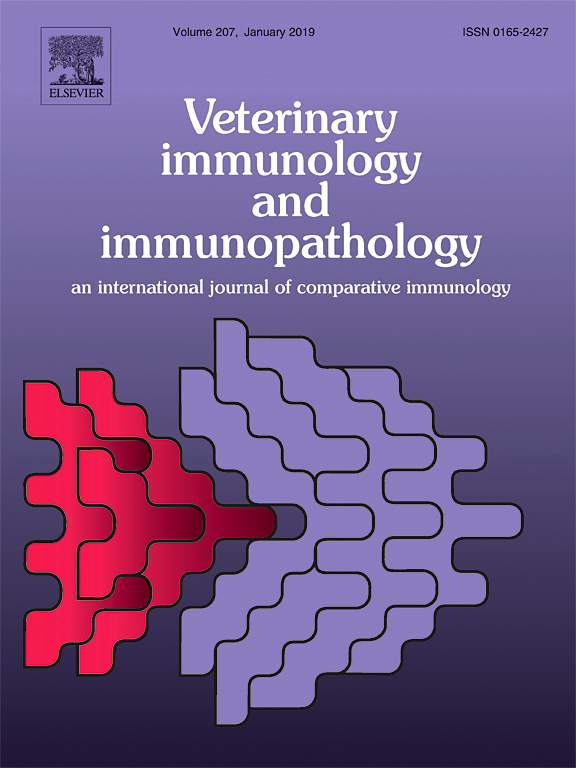Ver ítem
- xmlui.general.dspace_homeCentros Regionales y EEAsCentro Regional Buenos Aires SurEEA BalcarceArtículos científicosxmlui.ArtifactBrowser.ItemViewer.trail
- Inicio
- Centros Regionales y EEAs
- Centro Regional Buenos Aires Sur
- EEA Balcarce
- Artículos científicos
- Ver ítem
Cytokine expression in the placenta of pregnant cattle after inoculation with Neospora caninum
Resumen
Neospora caninum is recognized as a major cause of reproductive losses worldwide but its pathogenesis is not completely understood. Immune mediated placental pathology has been reported as being responsible for compromising pregnancy probably due to the adverse effects of exacerbated Th1 type response at the maternal–foetal interface. Different clinical outcomes are known to occur following experimental infections of cattle at different stages of
[ver mas...]
Neospora caninum is recognized as a major cause of reproductive losses worldwide but its pathogenesis is not completely understood. Immune mediated placental pathology has been reported as being responsible for compromising pregnancy probably due to the adverse effects of exacerbated Th1 type response at the maternal–foetal interface. Different clinical outcomes are known to occur following experimental infections of cattle at different stages of gestation, with foetal death being the most common finding during early gestation, and the birth of live congenitally infected calves following infection later in gestation. The aim of the current study was to characterize the cytokine expression in the placenta of cattle experimentally challenged with tachyzoites of the Nc-1 strain during early, mid and late gestation. Moderate to severe infiltration of IL-12, IFN-γ and TNF-α expressing cells was observed in the placentas collected at early gestation and this infiltration was more pronounced in the samples collected from challenged dams carrying non-viable foetuses, compared with the mothers carrying viable foetuses. In contrast, the infiltration of Th1 cytokine expressing-cells was mild following N. caninum infection in mid gestation and scarce during infection in late gestation. Scarce expression of IL-4 was observed in the placentas from N. caninum-challenged and negative control animals throughout gestation. The milder Th1 immune response observed during later stages of gestation following Nc-1 infection could partially explain the less severe clinical outcome when compared to early pregnancy.
[Cerrar]

Autor
Canton, German Jose;
Katzer, Frank;
Maley, Stephen W.;
Bartley, Paul M.;
Benavides-Silván, Julio;
Palarea-Albaladejo, Javier;
Pang, Yvonne;
Smith, Sionagh;
Rocchi, Mara;
Buxton, David;
Innes, Elisabeth A.;
Chianini, Francesca;
Fuente
Veterinary Immunology and Immunopathology 161 (1–2) : 77-89 (September 2014)
Fecha
2014-09-15
Editorial
Elsevier
ISSN
0165-2427
1873-2534
1873-2534
Formato
pdf
Tipo de documento
artículo
Palabras Claves
Derechos de acceso
Restringido
 Excepto donde se diga explicitamente, este item se publica bajo la siguiente descripción: Creative Commons Attribution-NonCommercial-ShareAlike 2.5 Unported (CC BY-NC-SA 2.5)
Excepto donde se diga explicitamente, este item se publica bajo la siguiente descripción: Creative Commons Attribution-NonCommercial-ShareAlike 2.5 Unported (CC BY-NC-SA 2.5)

